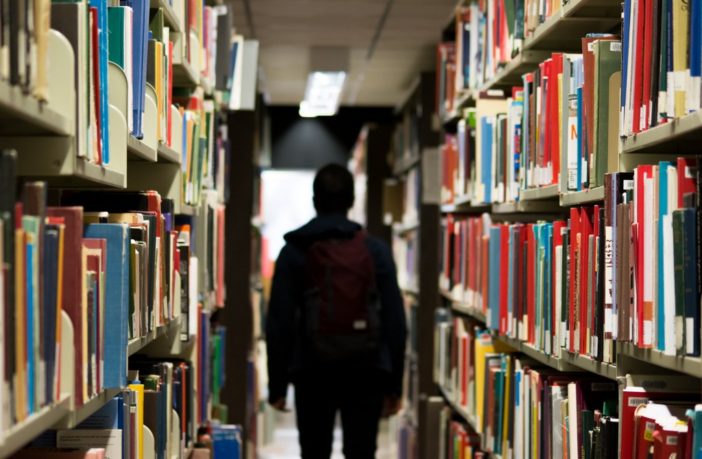By RayJaun Stelly,
Word in Black
Over the last eight years, safety at many schools in the state of Washington has come into question. During that time, there have been 10 shootings during regular school hours or school related activities in K-12 schools across the state. The most recent shooting took place a few weeks ago at Ingraham High School in Seattle, where a 17-year-old student was shot and killed in the school hallway after a fight in the bathroom.
The incident at Ingraham has once again ignited concern among parents and community members about youth violence, and what needs to be done in order to ensure the safety of our students while they are simply trying to get an education.
In 2014, a student at Marysville-Pilchuck High School, in Snohomish County, walked into the lunchroom and opened fire killing four classmates before committing suicide. That same year, a 19-year-old was killed, and a 22-year-old woman was wounded on the campus of Seattle Pacific University. Earlier this year, a 16-year-old student was killed and an 18-year-old was left injured as they were both shot in the parking lot of the football stadium of Eisenhower High School in Yakima.
With an unforgettable and unfortunate pattern regarding safety in schools statewide, this harmful act has made its way into the Seattle Public Schools community.
After the incident at Ingraham, Bev Redmond, a Seattle Public Schools spokesperson, stated,
“Our collective hearts are broken over the tragic, on-campus death of one of our Ingraham High School students and the senseless act of gun violence that claimed his life. His family, friends, and community are forever changed.”
When speaking to Sha’Quella Perine, who grew up attending Seattle Public Schools, about what concerns she has about the safety of students, she expressed concerns not only about violence, but also the current atmosphere and culture that is prevalent within the schools.
“Schools aren’t safe at all,” said Perine. “It’s easy to question when anything from an adolescent fight to a mass shooting can occur, students need more support than they’re currently receiving to help cure their perpetuating childhood trauma.”
“My other concern is that teachers are expected to do things out of their scope as far as their job description goes, which to me causes students to be mishandled in one way or another,” added Perine. “The school district needs to understand that the lack of basic needs directly affects the community, students cannot show up optimally without being well and properly taken care of.”
In addition to violence, many members of the community are also concerned about the mental health issues that are affecting some of the students who walk the hallways of schools on a daily basis.
Rita Green, a member of the NAACP, said that part of the problem stems from the lack of culturally competent mental health professionals and security personnel to meet the growing needs of students in the buildings.
“Mental health needs to be addressed, we need more than one counselor for 400 students, and counselors need to be trusted advisors,” said Green. “School security needs to be aware of any bullying issues going on in the school and work with these advisors to address the problem.”
“If relationships are built [within the schools]these advisors can become trusted and can provide support to students facing crisis,” Green continued. “For example, if a student is being bullied, they can confide in the trusted advisor, which allows the advisor to set up restorative justice circles to address both parties and resolve the conflict before it escalates.”
While there is a growing interest about the use of metal detectors and armed police officers in the schools, there are many who feel these may not be the best solutions for school safety. While there are some students that may feel relieved and much safer knowing an officer or two are walking the halls, there are others who may feel threatened by the presence of police in the school.
Emijah Smith, an education advocate in Seattle, believes that there are other available options to help curb/deter violence in schools that do not include the presence of armed police officers.
“Honestly, as a mother and PTSA parent, I do care about violence at schools, but I am more concerned about the social well-being of students and lack of support in that department,” said Smith. “Guns are a societal issue and they’re getting into the hands of our youth, but there are things we can do at the school that don’t involve police being up there with guns, because that doesn’t necessarily stop things such as this from happening.”
In addition to making improvements to the counseling system within the schools, Smith believes that the schools should utilize more resources to properly secure doors and other entry points around school buildings and make sure that people have to be “buzzed in” before entering the building.
In response to the growing frustration of many community members, thousands of students across Seattle voiced their concerns as they initiated their own protest to highlight the need for stricter gun control measures, more training for security staff and better mental health support for students.
“The city officials and policy makers need to be overt about the agenda they’re upholding and recognize that the system is broken,” said Perine. “We need laws that protect and work for our students and teachers rather than allowing public systems to oppress people.”
Help us Continue to tell OUR Story and join the AFRO family as a member –subscribers are now members! Join here!



